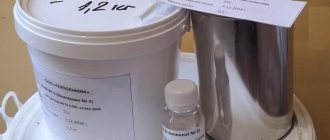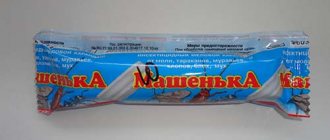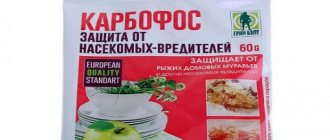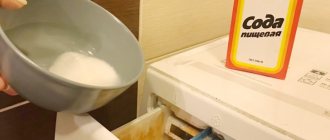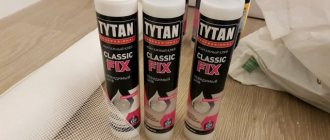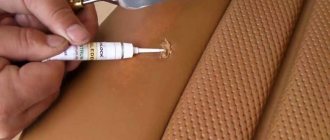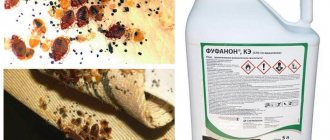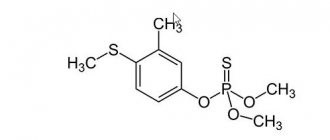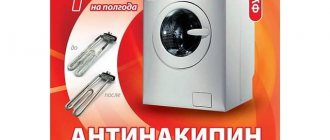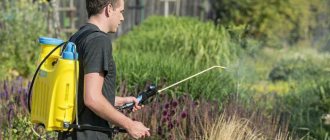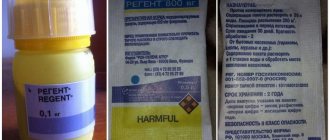Peculiarities
In comparison with similar products, Desmokol glue has 6 advantages:
- The composition is transparent, the gluing area after the repair remains unnoticeable. This makes it possible to restore things or shoes, giving them their original appearance.
- Glue is not afraid of water. The universal product connects surfaces whose moisture content does not exceed 25%. Therefore, “Desmokol” is used for repairing hunting and fishing equipment (suitable for gluing patches on rubber boats).
- The composition does not crack or crumble under the influence of loads when the air temperature drops to 0 °C.
- The glue is practical to use. It takes some time for Desmokol to dry completely. This makes it possible to adjust the connection location.
- Durability and strength of joints. Materials glued together using the composition form a single whole.
- The connection is durable and elastic. Shoes after repair do not cause discomfort.
The disadvantages of Desmokol glue include flammability, since the product is solvent-based.
See also
Types of adhesive compositions for polycarbonate and do-it-yourself rules for use
Advantages
The adhesive composition has several undeniable advantages when compared with other similar products:
- After final drying, Desmokol remains colorless, which allows you to make the joint completely invisible and completely restore the original attractive appearance of the product.
- The substance is not afraid of water and is capable of gluing surfaces whose humidity is up to 25%, therefore it is often used for repairing rubber boats and other equipment intended for fishing and hunting.
- The glue is resistant to low temperatures and does not crack in the cold.
- It is convenient to use, since it takes some time to completely harden, which makes it possible to adjust the position of the surfaces to be glued.
- Thanks to Desmokol, an elastic, strong, reliable seam is formed, the two surfaces become one.
Rules of application
Before starting work, you need to prepare the parts that are to be glued:
- Remove dust and dirt.
- Clean the surface from traces of old glue. To improve adhesion performance, treat everything with sandpaper.
- Remove moisture and degrease.
According to the instruction manual for Desmokol adhesive, the adhesive can be used in 3 ways.
Normal way
Having cleaned the area, apply the composition in a thin layer, after 10 minutes the surface is again coated with glue. The product is put aside for a while. Then the parts to be connected are pressed against each other with force.
When using heat
This method provides the best connection. 10 minutes after applying the composition, the glued areas are heated to a temperature of 80˚. Any heating device, for example, a hair dryer, is suitable for this. Hot surfaces are pressed together more tightly. If the composition is of high quality, you will not need to use auxiliary weights.
Wet method
The parts to be glued are thoroughly cleaned and moistened with water. "Desmokol" is not applied in a thick layer to the surface and is applied under a press. This method is considered the most effective.
Important! Shoes repaired in this way can be worn no earlier than after 24 hours.
Application of Desmokol glue
The principle of operation of SAR-306 is as follows: the composition is applied to the parts to be joined, the product is placed in a vice and wait for a certain time specified in the instructions. Initially, the glue is in a liquid viscous state; it is quite easy to apply it to the material. When dry, the solvent gradually evaporates, and the polyurethane resins polymerize, forming a very strong, moisture-resistant compound.
Glue in a jar
Resins have better adhesion compared to similar materials. This principle is the basis for the use of the composition.
Desmokol is used for gluing:
- thermoplastics of almost all types;
- polyvinyl chloride;
- rubber - which allows you to repair rubber boats, mattresses, lifebuoys;
- polyurethane.
In the production of footwear, SAR-306 is used not only for repairs, but also for sewing products. It is this product that glues or duplicates the fastening of polyvinyl chloride and polyurethane soles to a fabric upper, an upper made of fatty leather, PVC materials, etc.
In addition, the glue can be used for gluing metal, glass, plastic, including PVC products, which significantly expands its household use. The fact that the composition remains transparent after drying is a big plus when carrying out minor repair work.
Analogs
There are other high-quality brands of glue that do not differ in performance characteristics from Desmokol:
- "Nairit." Universal adhesive of a light brown color with a strong solvent odor. Gluing work must be carried out in a room with good ventilation.
- "I-900". A two-component mixture that is characterized by gasoline, oil and water resistance. The main purpose is gluing rubberized fabrics, but it is also used for other materials: paper, plastic, leather and chipboard.
- "POLING-170". Shoe glue, also used for gluing dense fabrics, glass, rubber, thermoplastic elastomers. Requires thermal activation with lamp heat sources.
- "SAR 306". One-component adhesive resistant to high temperatures. It was developed for the leather goods industry, but has become widespread in other areas. In carefully sealed original packaging, after opening, it retains its working properties for up to 24 months. Available in 2 colors: white, translucent and black.
See also
Instructions for using BF-6 glue for healing wounds and cuts
Before using analogues, the preparation of the parts to be glued is carried out in accordance with the rules for using Desmokol polyurethane glue.
Characteristics of the adhesive composition
Desmokol or SAR-306 consists of polyurethane resins in an organic solvent. The composition includes additional modifying additives, which allows it to be used not only for repairing shoes, but also other products made of polymer materials - boats, for example, a water mattress, and so on.
Shoe repair
However, first of all, the product is intended specifically for repair and has all the necessary qualities for this.
- The composition is completely transparent, so that after repair the seams and joints are invisible to the eye.
- The polymer composition is not afraid of moisture in any form, so it can be safely used when repairing shoes, rubber boats, fishing boots, PVC products, and so on. Moreover, it can bond wet materials – up to 25%.
- Desmokol shoe adhesive has excellent frost resistance, since its solvent is an organic liquid. The material does not absorb moisture and, accordingly, is insensitive to frost.
- The adhesive seam retains elasticity, so boots and boots will still be comfortable to wear after repair.
- The disadvantages of the material include its flammability: like any other composition based on an organic solvent. He burns.
It is very easy to work with the composition; you just need to follow simple instructions. It takes some time for the glue to dry, so if it turns out that the glued parts are connected incorrectly, there is always the opportunity to correct their relative position.
Glue in a tube
Desmokol is available in different forms:
- metal tubes with a volume of 50 ml;
- liter metal containers;
- Euro bucket – 20 l;
- metal barrels – 200 l.
The adhesive composition is stored in sealed packaging at temperatures from +10 to +25 C. The material should not be left near heating devices or other heating devices. Shelf life after opening the package is 12 months.
Instructions for Desmokol glue
The procedure for using the adhesive is very simple. The instructions contain detailed recommendations for use.
- First, prepare the surfaces. To do this, the parts to be glued are cleaned and degreased.
- The surfaces are treated with fine-grain sandpaper and degreased again. In this way, better adhesion of the material is achieved.
- Before gluing the parts, Desmokol is mixed - shaken in a container.
- Apply a thin layer of glue to both parts and leave for 10–15 minutes; if during this time the composition has been completely absorbed, apply a second layer and leave for 15–25 minutes. Surfaces ready for gluing should have a characteristic glossy shine and not stick to fingers.
- The elements are thermally activated, that is, they are heated at a temperature of 75–80 C. In workshops, industrial hair dryers are used for this; at home, you can use a regular hair dryer. Warming up takes 2–4 minutes.
- The parts are connected and held 15–20 times with force - the pressure is 0.2–0.5 MPa. In this case, there is no need to use a clamp, vice, etc. The photo shows shoe glue in action.
How to properly glue shoes with Desmokol?
Before using shoe glue, you must carefully prepare the work surface:
- clean from dirt;
- remove traces of old glue;
- sand the work surface;
- degrease.
Apply a thin layer of Desmokol to both parts that you plan to glue and wait 5-10 minutes for it to dry. If the composition is absorbed, reapply it and wait a few minutes again. It should “set” and form a glossy film that does not stick to your fingers.
Using an industrial hair dryer or other heating device, heat the adhesive surfaces to approximately 80 degrees, and then press them together as tightly as possible.
A high quality desmokol will immediately provide a strong connection and you will not have to use a vice, clamps or any weight for additional compression. You can use the shoes for their intended purpose after a day.
How to pour and how to dilute Desmocoll?
You can pour shoe glue from a metal can or canister into any plastic bottle, but it is important to screw the cap tightly, as pressure will be created inside it. Don't worry - the bottle won't burst, since the pressure won't be so high
If you bought granular Desmokol, you will need pure acetone to dilute it. Mix them in a ratio of 1 to 10, that is, for 30 g of glue you will need 300 ml of acetone.
It is recommended to dissolve at an ambient temperature of 25-30 degrees. The granules are filled with acetone and the mixture is left for 6-8 hours. During this time, the granules should swell, forming a transparent heterogeneous solution. It must be mixed several times until it has a homogeneous liquid consistency.
There is one trick that experienced shoemakers know about. When it is necessary to glue products that are subject to constant exposure to moisture, temperature or increased mechanical stress, the Desmodur additive can be added to Desmokol (5-7 percent of the glue volume). The modified mixture will provide additional thermal resistance and strength.
Are there any analogues?
The most popular analogue of Desmokol glue is Nairit, created from artificial polychloroprene rubber, structuring components and resins, as well as a mixture of organic-based solvents.
The adhesive composition is common in the shoe industry, where it is used to join shoe uppers and soles. Nairit is suitable for gluing heels to soles and adhesively tightening the upper part of shoes.
There is another adhesive based on polyurethane I-900, used as a 1- or 2-component polyurethane composition. Resistant to moisture, oil, solvents and acids. In the shoe industry, this glue is used for gluing thermoplastic, rubber, polyurethane and polyvinyl chloride soles to the upper parts of shoes made of natural or artificial leather.
Storage rules
To ensure that the product does not lose its properties, it must be stored in a warm place away from heating devices, the optimal temperature is up to +25 degrees Celsius. The product can be used for 12 months after it has been produced, after which time it will lose its valuable qualities. The instructions also indicate that Desmokol has high flammable properties, so if you are using it for the first time, work must be carried out in a safe place, away from fire. There should be good air circulation in the room itself.
Take note! If you plan to use the glue several times, after completing the work, do not forget to tightly close the tube and put the product in a dark place.
Are there any analogues to Desmokol?
If it is impossible to purchase this adhesive mixture, then you can select its substitutes. Among the most popular formulations, 3 products stand out:
- Polyurethane shoe adhesive SAR 306. This product is excellent for gluing plastic and leather surfaces. They must be used according to the instructions, observing safety rules, because... SAR glue contains toxic substances.
- Nairit. This product is often used to repair fabric, leather and plastic products.
- I-900. This product perfectly withstands the influence of acids, alkalis and other aggressive substances.
- POLING-170. This mixture is used to repair PVC, rubber, fabrics, metal alloys, glass, plexiglass and plastic.
Shoe glue
Of course, it is better to give preference to more expensive products. Since their manufacturer provides a warranty period for their product. As a result, it is more wear-resistant and durable. But this is not always the case. Quite often, expensive, high-quality shoes get damaged. For example, it breaks. The reason for this may be either a manufacturing defect or careless attitude towards the product. As a result, it becomes unusable. But you shouldn’t be upset, you can restore it to its previous appearance. All you need to do is repair your shoes.
Nairite glue
You can repair the product yourself, but this is provided that the damage is not significant. A shoe specialist can handle complex cases better. For this he has the necessary tools and materials, the cost of which is high and sometimes there is simply no point in buying them for an ordinary person. Since many materials have a limited shelf life. After it expires, it loses its properties and is unlikely to help solve the problem.
